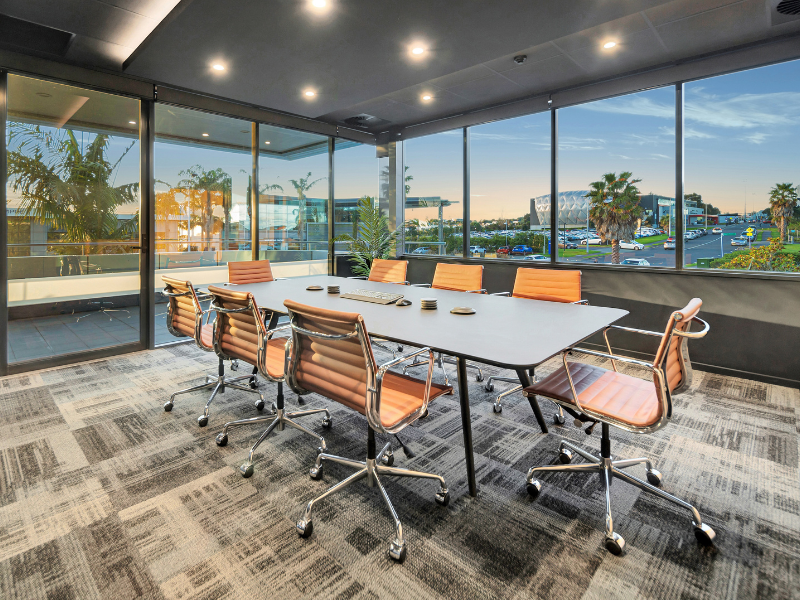It’s fair to say the way we work has changed significantly in the past few years. While the single greatest catalyst of this shift was the disruption caused by Covid-19 lockdowns, changes in attitudes towards the way we arrange our workspaces predated 2020.
But after a drastic move to remote working, then to hybrid arrangements, and now to a mix between the two, it’s only natural that trends in office furniture, layout and design have moved with the times. Priorities have shifted: more emphasis is being placed on curating positive work environments and employee wellbeing; minimalism, flexibility and progression towards a non-hierarchical atmosphere are the gold standard for workplaces today.
Office furniture and fixtures are central to the shift in attitudes to working and the spaces in which we do it. So to find out more, ArchiPro sat down with Adelle Rodrigues, the marketing coordinator of McGreals – one of New Zealand’s largest providers of office furniture solutions – who gives her perspective on the trends she’s noticed in the industry – and what’s next.

ArchiPro: Do you agree that modern offices are increasingly adopting open-plan, non-hierarchical layouts? If so, can you speak on your perspective on this trend?
Adelle Rodrigues: In today’s fast-paced and collaborative work environment, it’s crucial for employees to feel valued, heard, and have easy access to open communication channels. Open-door policies and collaborative seating arrangements can contribute significantly to fostering a culture of transparency, accessibility, and effective teamwork.
Modern office furniture plays a vital role in creating such an environment.
Because of this shift in mindset, there has been a significant increase in the demand for modern office furniture that enables it. As businesses adapt to changing work dynamics and prioritise employee well-being, revamping office spaces with this new furniture has become a popular trend.

AP: What are some specific trends you've noticed recently?
AD: There are a couple of standouts:
Informal meeting spaces: Traditional meeting rooms are being replaced by more relaxed and informal settings. Silent pods and booths provide private spaces for small group discussions or individual focus work, while offering a quiet and comfortable environment.
Storage planter tambours: Functional and aesthetic dividers, such as storage planter tambours, are being used to separate spaces while also serving as storage solutions. These dividers not only create visual separation but also bring a touch of nature into the workspace.
Privacy and acoustic considerations: While open-plan workspaces encourage interaction, it is also important to provide areas for focused work and privacy. Modern office furniture incorporates solutions like acoustic panels, privacy screens, or designated quiet zones to ensure that employees have the option to work without distractions or hold confidential conversations when needed.
Soft seating and breakout areas: To create a welcoming and comfortable atmosphere, businesses are incorporating soft seating options and breakout areas. These spaces give employees a sense of relaxation, fostering creativity and providing a “home away from home” feeling.
Electric desking: As ergonomic considerations become a priority, businesses are increasingly adopting electric desking solutions. These adjustable-height desks allow employees to switch between sitting and standing positions, promoting better posture and reducing the potential health risks associated with sedentary work.
Ergonomic seating: Employee well-being is at the forefront, leading to the use of ergonomic seating options. Chairs with adjustable features, lumbar support, and breathable materials are implemented to enhance comfort, reduce physical strain, and support better posture during extended work periods.

Soft seating and breakout areas are an important part of making a workspace feel more relaxing.

AP: Are there any specific furniture solutions that have gained popularity as a result of increased remote and flexible arrangements?
AD: Hot desking has become a definite trend – this refers to a system where employees do not have assigned desks but instead choose an available workspace when they arrive at the office. In such environments, the need for personal storage solutions has grown, leading to a rising demand for mobile storage and lockers.
In many instances, this arrangement promotes flexibility and can maximize workspace utilization.

Planters can be used functionally as a partition, while serving their primary aesthetic purpose.

AP: What services does McGreals provide to cater to these changing trends?
AD: McGreals has embraced the evolving landscape of office furniture and has reimagined the modern workplace. Our skilled design team takes pride in crafting all our projects. Although client preferences may vary, the underlying concept remains consistent. We have observed a growing trend towards custom-sized furniture and upholstery.
Businesses now prefer a wide range of products that can be tailored to their specific needs. At McGreals, we offer a diverse selection of customisable options, allowing businesses to create personalized solutions for their office spaces.
Written by: The team at Archipro

